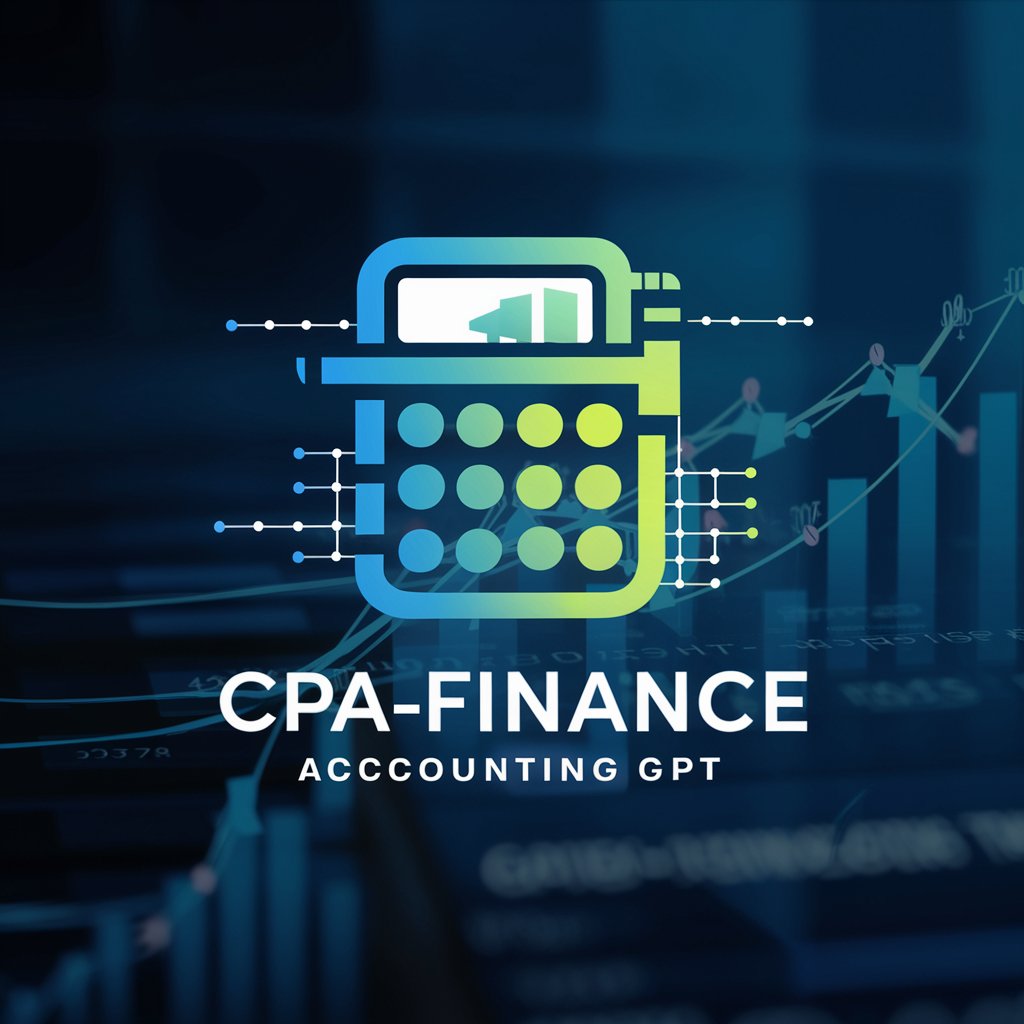
Finance, Accounting, Budgeting,M&A and taxes - AI-based financial advisory tool

Hello! Ready to assist with your financial queries.
AI-driven finance and accounting assistant
Advise on optimizing a financial transaction
Explain regulatory reporting in finance
Help with due diligence in M&A
Guide me through a complex financial decision
Get Embed Code
Introduction to Finance, Accounting, Budgeting, M&A, and Taxes
Finance, Accounting, Budgeting, M&A, and Taxes are interconnected functions critical to the operational and strategic management of businesses. These disciplines ensure a company’s financial health, compliance with regulations, and the ability to make informed investment or operational decisions. Each area focuses on a specific aspect: Finance deals with managing capital, investments, and liquidity; Accounting ensures accurate financial reporting and regulatory compliance; Budgeting involves forecasting and managing financial resources; Mergers & Acquisitions (M&A) handle company acquisitions, sales, and valuations; and Taxes focus on compliance with tax laws and optimization strategies. Together, these functions enable companies to optimize resources, maintain transparency, and drive sustainable growth. Example Scenario: A mid-sized manufacturing firm decides to acquire a competitor to expand market share. The company's finance team assesses capital requirements, the accounting team evaluates historical financial data of the competitor, budgeting creates financial forecasts, M&A handles negotiations, and the tax team ensures the deal's structure is tax-efficient. Powered by ChatGPT-4o。

Main Functions of Finance, Accounting, Budgeting, M&A, and Taxes
Financial Management
Example
A firm managing its investment portfolio for long-term growth while maintaining short-term liquidity.
Scenario
A tech startup seeks capital to expand operations. The finance team evaluates various funding options, including equity, debt, or venture capital, balancing the need for cash flow with the company's growth potential.
Accounting Compliance and Reporting
Example
Ensuring compliance with IFRS standards while preparing financial statements.
Scenario
A multinational corporation operates in multiple jurisdictions and needs to adhere to the International Financial Reporting Standards (IFRS). The accounting team prepares consolidated financial statements, adjusting for international differences in reporting standards and ensuring compliance across the board.
Budgeting and Forecasting
Example
Allocating financial resources based on projected revenue and expense forecasts.
Scenario
A retail chain uses budgeting tools to forecast sales for the next fiscal year, adjusting for seasonal trends and economic indicators. This process helps in allocating marketing budgets, staffing plans, and capital expenditures.
Mergers and Acquisitions (M&A)
Example
Performing due diligence and valuation for a target company.
Scenario
A large manufacturing company intends to acquire a smaller competitor. The M&A team conducts a detailed analysis of the target company’s financials, identifies potential synergies, and negotiates a fair purchase price using the Discounted Cash Flow (DCF) method【11†source】.
Tax Optimization and Compliance
Example
Structuring corporate transactions to minimize tax liabilities.
Scenario
A global corporation plans an internal restructuring. The tax team ensures the restructuring is compliant with tax laws across different jurisdictions, and implements transfer pricing strategies to reduce overall tax burdens【12†source】.
Ideal Users of Finance, Accounting, Budgeting, M&A, and Taxes
Large Corporations
Large businesses benefit from finance, accounting, and tax services to manage complex financial transactions, ensure regulatory compliance, and optimize performance. These services are essential for overseeing M&A activities, global expansion, and cross-border tax strategies.
Startups and SMEs
Small to medium enterprises (SMEs) and startups require budgeting, forecasting, and tax compliance support to scale efficiently. These services help manage cash flow, access capital, and navigate tax incentives while avoiding regulatory pitfalls.
Investors and Private Equity Firms
Investors and private equity firms use M&A and financial analysis services to assess target companies, perform valuations, and structure acquisitions. These services ensure due diligence, provide insights on investment returns, and assist in managing portfolio companies.
Government and Public Sector Entities
Government agencies and public sector entities rely on budgeting, financial management, and tax compliance for planning, fund allocation, and auditing. Proper financial stewardship ensures accountability and efficient use of taxpayer resources.

How to use Finance, Accounting, Budgeting, M&A, and Taxes
Visit yeschat.ai for a free trial without login, also no need for ChatGPT Plus.
Access the tool effortlessly for a hands-on experience with no need for a subscription or an account.
Identify your use case.
Determine whether your focus is on financial forecasting, M&A due diligence, budgeting, tax planning, or another area. Having a clear goal will optimize your tool experience.
Input your financial data.
Ensure you have accurate financial statements or figures to process. This step is crucial for precise output, whether calculating financial ratios or conducting asset valuation.
Apply the appropriate functions.
Utilize functions such as cash flow analysis, tax calculation, or M&A modeling to generate relevant financial insights. Leverage built-in templates for complex processes like DCF models.
Interpret the results and act.
Review the generated reports, adjust strategies, and implement changes to improve your financial performance or decision-making.
Try other advanced and practical GPTs
BIDARA
Designing with nature’s genius

Dr. Synthara
Nature’s Innovations, Digitally Enhanced

Psychiatrist
Empowering Mental Health with AI

SendGrid Code Courier
Empower your email with AI

Limitless
Empower Your Intelligence

Lore Weaver
Unravel Game Worlds with AI

Destinations Exotiques
Explore the Unexplored with AI

Destinations Designer
Your AI-powered travel architect.

Power Pages
Create Smart, Effortless Websites

Mythos Architect
Explore myths with AI guidance

Mythos Maven
Explore Myths with AI Power

Mythos Weaver
Craft Your RPG World with AI

Frequently Asked Questions on Finance, Accounting, Budgeting, M&A, and Taxes
How can I use the tool for M&A due diligence?
Input company financials, apply valuation methods like DCF or multiples, and generate reports on financial health, risks, and synergies to assess acquisition targets. The tool helps in streamlining due diligence by identifying red flags and validating the strategic fit.
How does this tool assist in tax compliance?
The tool helps track financial transactions, calculate tax liabilities, and ensure compliance with local tax regulations. It also provides support for preparing documents required for tax filings and helps optimize deductions and credits.
Can the tool assist with budgeting and forecasting?
Yes, it supports the creation of detailed financial forecasts and budgets by analyzing historical data, predicting future trends, and helping allocate resources optimally across departments or projects.
What kind of financial reports can I generate?
You can generate balance sheets, income statements, cash flow reports, and specific analyses such as EBITDA, ROI, or break-even analysis. Reports can be customized for internal use or presented to stakeholders.
How does the tool handle complex financial transactions like asset transfers or IPOs?
It allows you to input transaction data, apply asset valuation methods, and track financial performance. For IPOs, it assists in financial modeling, cash flow projections, and risk assessments to support investor presentations and regulatory filings.






